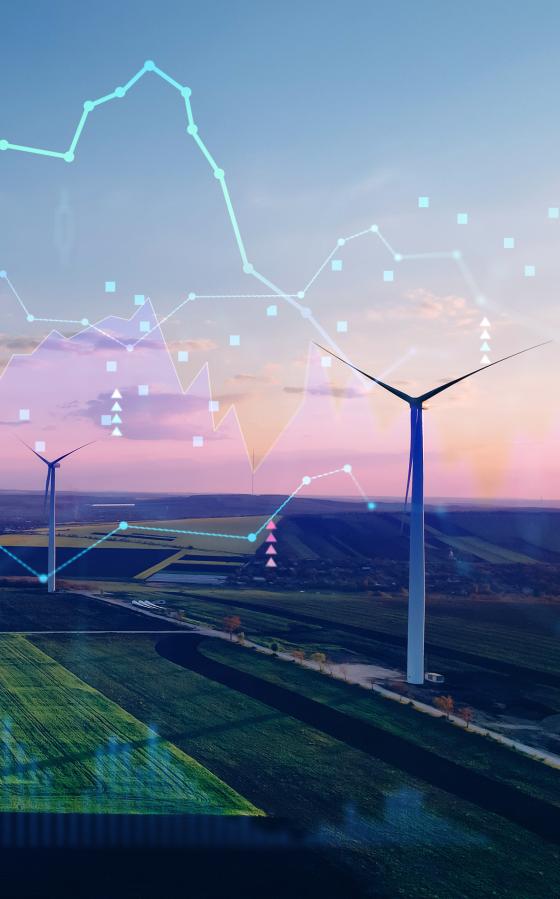Hours when generation was
mostly non-responsive.
Progress of EU electricity wholesale market integration
2024 Market Monitoring Report
Further integrating EU electricity markets is essential for efficiently matching supply and demand as renewable energy, which is weather-dependent, grows in the generation mix. Effective EU electricity market integration allows low-priced surplus renewable energy from one area to be shared with neighbouring regions.
A well-integrated EU power market:
- reduces price volatility;
- increases investor confidence; and
- promotes competitive electricity prices, supporting the EU's energy transition and economic competitiveness.
What is in this ACER report?
- The report evaluates progress in EU electricity market integration across all market time periods (forward, day-ahead, intraday).
- It analyses the challenges in integrating balancing markets, developing forward markets, and the slow progress in implementing methodologies for day-ahead and intraday market operations.
- It includes ACER's recommendations and ongoing efforts to improve electricity market efficiency, infrastructure investment and use, and flexibility through demand response.
Check out ACER’s new interactive electricity dashboards
For the first time, this annual monitoring report is accompanied by three dashboards on key market indicators such as prices and churn rates (a liquidity metric), balancing data (e.g., volumes, prices and exchanges) and data on long-term transmission rights (including risk premia).
What are ACER’s key findings?
In March 2024, ACER reported frequent negative electricity prices across the EU. In June 2024, the Agency warned (in its electricity cross-zonal report) of rising congestion management costs in the EU power grid, which reached €4 billion in 2023. ACER emphasised the importance of increasing cross-zonal capacity for trade.
This ACER electricity market integration report reveals that:
- With the expansion of renewable energy, the role of fossil fuels in electricity systems is diminishing. The new generation mix is marked by a 10% rise in hours of mostly non-responsive generation (generation that does not adapt to short-term changes in demand) in 2023. ACER stresses the need to enhance power system flexibility for an efficient energy transition.
- However, delays in implementing market design changes hinder flexibility. 27% of market design rules (methodologies, terms, and conditions) are delayed in terms of implementation.
- PICASSO, MARI and TERRE are the Transmission System Operators’ (TSOs’) projects establishing the three European electricity balancing platforms. Balancing market integration remained limited in 2023. The TSOs of only four Member States were active on the balancing platforms in 2023. By early November 2024, two additional TSOs had joined PICASSO and three had joined MARI. ACER encourages more TSOs to join the balancing energy platforms, highlighting that increased participation can expand cross-zonal exchanges and reduce the occurrences of high electricity balancing prices.
- Currently, electricity forward markets offer investors visibility on future prices for up to one year only, limiting long-term investment certainty. In 2023, ACER proposed improvements to long-term transmission rights (LTTRs) to strengthen forward markets and support the energy transition.
What does ACER recommend?
ACER recommends taking a proactive approach to further integrate power markets and strengthen connections.
Integrating markets, strengthening connections
- Governance: ACER and national regulators to monitor methodologies that define market operation (in 2025). European Commission to assess ACER’s forward market proposals (by January 2026).
- Market efficiency: With updated balancing rules, ACER urges TSOs to join balancing platforms to enable more exchanges of balancing energy. ENTSO-E and TSOs to improve data quality for monitoring balancing (in 2025).
- Power Purchase Agreements (PPAs): ACER to start monitoring PPAs (in 2025).
Stronger infrastructure, stronger future
- Efficiency-first approach: Full utilisation of infrastructure, focus on optimising every installed megawatt.
- Smart investments: ACER’s 2021 position paper calls for incentivising smart grid upgrades to manage renewable energy variability. Upgrading transmission lines and rolling out innovative grid technologies is essential. ACER to release infrastructure development report (December 2024).
- Connectivity: ACER to continue monitoring the progress towards the requirement that 70% of transmission capacity be made available by TSOs for cross-zonal trade.
- Grid tariffs: ACER to review electricity network tariff approaches (in 2025) and continue offering best practices on setting tariffs to reflect real network costs.
Breaking barriers, building opportunities
- Flexibility through demand response: As a follow up to its demand-side response assessment (December 2023), ACER will publish a list of no-regret measures (early 2025).
- Regulatory framework: ACER is driving the development of the framework for demand-side flexibility. Following its public consultation (2024) on the topic, ACER will submit a proposal for a network code on demand-side flexibility to the European Commission (by March 2025).
What are the next steps?
- ACER will continue to monitor TSOs' involvement in balancing platforms.
- December 2024: ACER will publish its first report on power infrastructure investment.
- Early 2025: ACER will begin an in-depth review of methodologies that define market operations.
- By March 2025: ACER will propose a network code on demand-side flexibility to the European Commission.
These steps aim to enhance market efficiency and contribute to a resilient, flexible electricity infrastructure, supporting Europe’s energy transition and long-term economic stability.
Progress of EU electricity wholesale market integration

Highlights
-
+10%
-
7,000 h
Prices below 5€/MWh
(1,400 hours in 2019). -
27%
Methodologies face
implementation delays in 2024.
Report
ACER 2024 report finds that:
- With the expansion of renewable energy, the role of fossil fuels in electricity systems is diminishing. The new generation mix is marked by a 10% rise in hours of mostly non-responsive generation (generation that does not adapt to short-term changes in demand) in 2023. ACER stresses the need to enhance power system flexibility for an efficient energy transition.
- However, delays in implementing market design changes hinder flexibility. 27% of market design rules (methodologies, terms, and conditions) defining market operations faced implementation delays in 2023.
- In 2023, low electricity market flexibility led to price spikes and reduced renewable energy profitability, despite average day-ahead prices remaining twice as high as pre-2020 levels.
Key market indicators
This dashboard provides the fundamental market indicators for the forward, day-ahead and intraday timeframes. This includes:
- Daily prices & volumes.
- Monthly churn factors. The churn rate (or the number of times electricity generated in a market is subsequently traded) is an indicator of liquidity.
Valuation of Long-Term Transmission Rights (LTTRs)
This dashboard provides an overview of long-term transmission rights and their associated risk premia. This includes:
- Ex, post and forward risk premia.
- Net financial transfers.
- Auction competitions.
Balancing
This dashboard provides an overview of the evolution of key balancing market indicators. This includes:
- All types of reserves.
- Volumes and prices.
- The exchange of balancing services within the EU.
Additional information
- Access the underlying datasets
